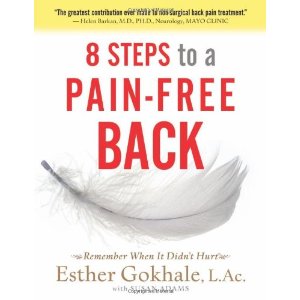 Back pain is the number one reason for doctor visits in America. It’s no question that hours in front of the TV and computer, coupled with our generally sedentary lifestyles have much to do with the back pain epidemic, but what about the way we walk?
Back pain is the number one reason for doctor visits in America. It’s no question that hours in front of the TV and computer, coupled with our generally sedentary lifestyles have much to do with the back pain epidemic, but what about the way we walk?
According Esther Gokhale, the author of 8 Steps to a Pain-Free Back, walking a specific way will not only eliminate chronic back pain, but lift and firm your butt at the same time.
Gokhale grew up in India, earned her biochemistry degree from Princeton, and suffered from back pain for years. After back surgery didn’t work, she decided to find the cure to her pain on her own.
After much study, she feels she has found the answer. According to Gokhale, most people have a poor walking technique which under-uses certain muscles and over-uses certain joints, risking injury and degeneration. However, walking with a controlled, forward propulsion targets the butt and leg muscles and spares the joints. This specific form of walking is called “glidewalking” and strengthens the glute muscles, which also hold the pelvis in proper alignment, improving posture.
Despite what you may be picturing, Gokhale claims that glidewalking is completely natural and easy to adopt. Instead of walking by falling forward and then sticking your leg out to catch yourself like most people do, those who glidewalk propel themselves forward using their muscles, easing the impact on joints and increasing the use of butt and leg muscles.
Glidewalking posture tips the pelvis back, with your butt slightly sticking out, and your torso leaning slightly forward, which is opposite of what Gokhale says most people do, which is tip their pelvis forward so their stomach is concave and using momentum to walk instead of your muscles.
I know I walk like that. I can’t walk around barefoot pain-free for long because I slap my feet on the ground with each step and my shoulders are always rounded, which does indeed cause me back pain. Anything that can strengthen the over-looked muscles to cure my back pain sounds worth a try to me.
What do you think? Genius discovery or too good to be true?
